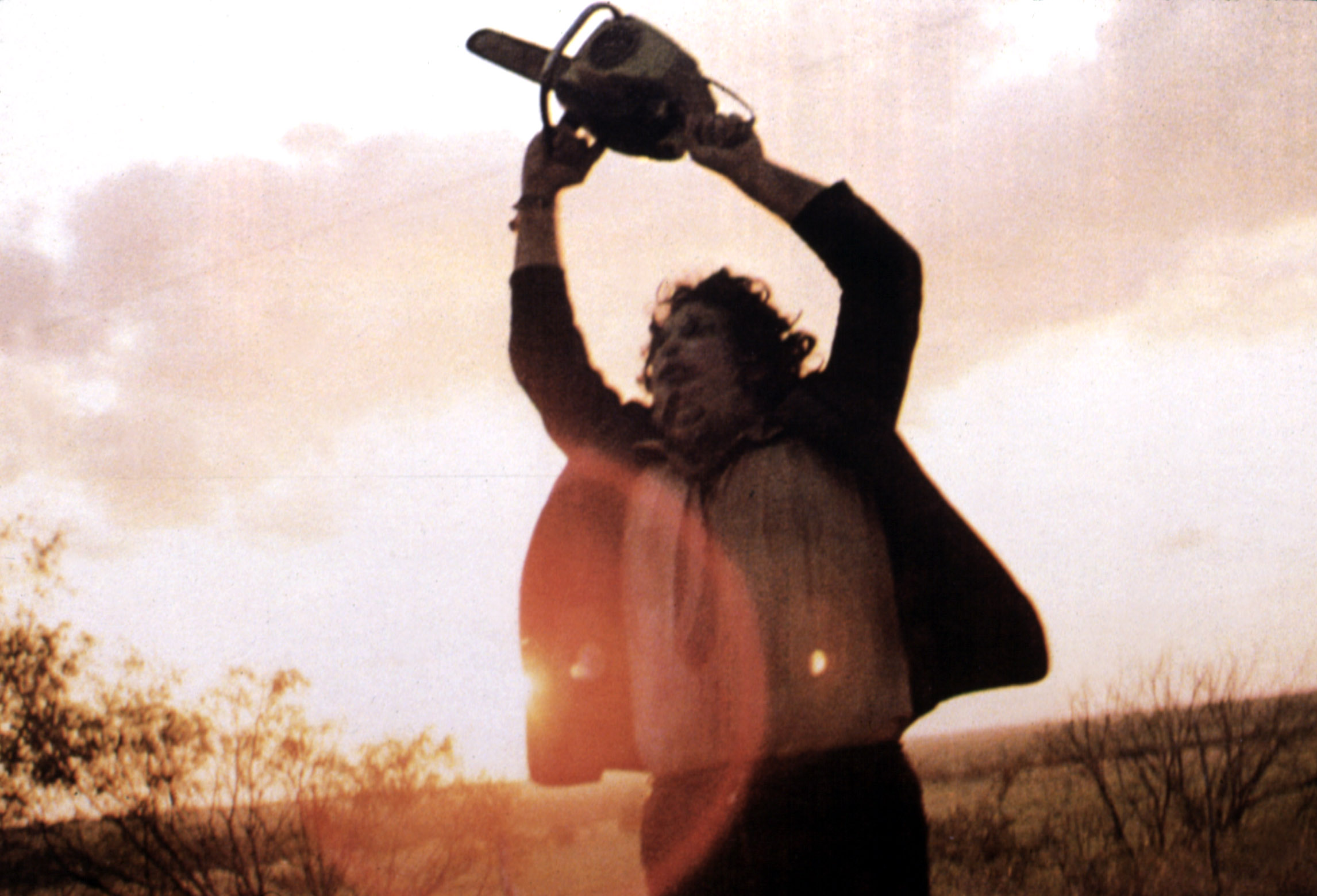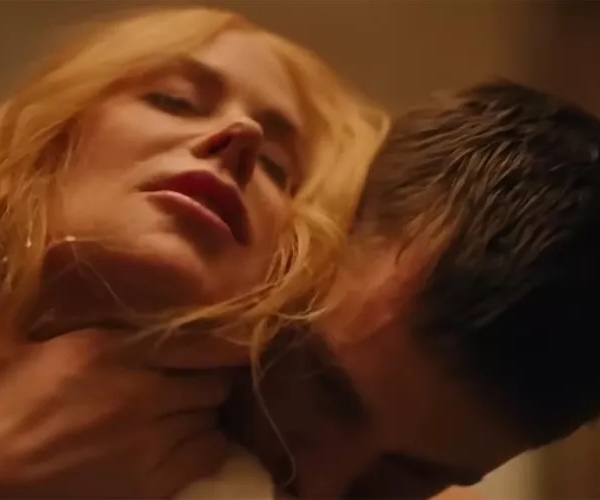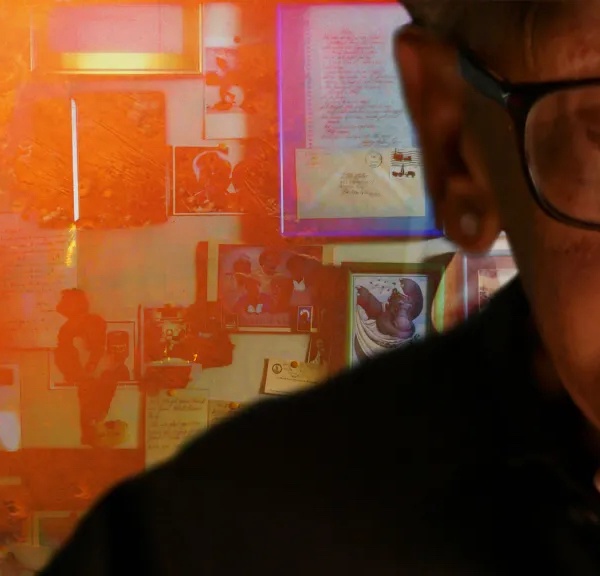Despite being banned from theaters at its initial 1974 release for its shocking violence, Tobe Hooper’s “The Texas Chain Saw Massacre” remains among the most influential horror films in history — and one that’s inspired countless remakes, sequels, spinoffs, and imitators.
Hooper, who would later direct the cult series “Salem’s Lot” (1979) and the ’80s phenomenon “Poltergeist” (1982), was a documentary cinematographer and an assistant film director at the University of Texas-Austin in the early ’70s. Co-written by Kim Henkel, “Texas Chain Saw” was remarkably only his sophomore feature following his 1969 psychedelic debut “Eggshells,” which Henkel also co-wrote and starred in.
In “Texas Chain Saw,” Sally (Marilyn Burns), her brother Franklin (Paul A. Partain), and their friends go on a doomed road trip in Texas County. On their way to Sally and Franklin’s family slaughterhouse, the journey goes off course when a hitchhiker splatters blood on their RV, and masked serial killer Leatherface infiltrates the domestic setting.
There is minimal gore in the death scenes, but the screams and scares still bewildered critics in 1974. The LA Times wrote at the time, “Henkel and Hooper seem less concerned with a plastic script. Craziness handled without sensitivity is a degrading, senseless misuse of film and time.” However, fans rejoice over the gripping pouncer as they notice Henkel and Hooper’s dark sense of humor and their admiration for the movie soars through its half-century existence. It has been a mainstay for genre and horror media conventions as the cult classic was the center of 36 documented (past and upcoming) panels worldwide since 2017. It was one of the 15 highest-grossing films in 1974, with a return of $26.5 million and an additional $2,288 in its 2021 re-release.
Henkel told IndieWire that his second feature-length collaboration with Hooper — one that was a response to the Vietnam War and Watergate — is “Hooper’s most personal, intense film.” Several scholars have cited the horror classic as a metaphor for American disillusionment. For example, author Joseph Lanza wrote that “it casts an eerie reflection on what Jimmy Carter would later call America’s ‘crisis of confidence” in his 2019 book, “The Texas Chain Saw Massacre: The Film That Terrified a Rattled Nation.”
Along with Italian giallo films, “Psycho” (1960), and “Peeping Tom” (1960), Hooper and Henkel’s screenplay laid the foundation for the slasher subgenre. These included masked heavies, graphic killings resulting from stalking-murdering sequences, and “the final girl” confronting the villain.
Since its release, “Texas Chain Saw” spawned eight additional installments (all feature the iconic Leatherface), with Henkel back in writing and producing capacities. Hooper would later direct “The Texas Chainsaw Massacre Part 2” (1986) and co-produced “The Texas Chainsaw Massacre” (2003) with Henkel. Henkel also directed “The Return of the Texas Chainsaw Massacre” (1995).
To honor an August 8 50th-anniversary screening of “Texas Chain Saw” at the Museum of Modern Art (one of the film’s earliest champions, which acquired it for its permanent film collection), IndieWire chatted with co-screenwriter Kim Henkel, actor Teri McMinn, cinematographer Daniel Pearl, and locations manager Ron Bozman. They will participate in that evening’s Q&A.
This interview has been condensed and edited for clarity.
The Origins of ‘The Texas Chain Saw Massacre’
Henkell and Hooper were disappointed in the reception of “Eggshells.” It fueled them to pursue projects in the then-successful horror marketplace (e.g., 1973’s “The Exorcist” and “Don’t Look Now”) after Henkel read several Brothers Grimm and Japanese fairy tales, and the rest is history.
Kim Henkel: “Eggshells” played in maybe one or two theaters and at a festival in Atlanta. So there weren’t a whole lot of places for it. And in those days, a film had to go to theaters. So we decided we wanted to make a film that we could actually get into theaters. Given the fact that we had no money, we were completely unknown. We fell away with two options — horror or science fiction — that you could do on a low budget and have just the remotest chance of actually getting distribution. And we felt horror would work better for us. I seem silly to say [this], but we felt it was more grounded. Not that horror is entirely up to the surface. I read a lot of Grimm’s fairy tales and some Japanese fairy tales. But, we were looking to root the story and those kinds of core things that had worked through the centuries. So, we felt a greater kinship to that approach than science fiction.
Teri McMinn (Pam): It was pretty hard to wrap my brain around chainsaws and meat hooks. And I had no clue. I was a serious actor. I had been at the Dallas Theater Center prior to that. I wasn’t excited. I had no idea who any of the people were. I was pretty in the dark on what this was all about. So I kind of went away and thought, I don’t want to do this. And then a friend of mine kept talking to me all day and said, “Come on, Teri. You know, there’s not that much going on in Austin at that time.” And so I called Kim, and I said, “I really want to do your film.” He said, “Well come tonight.” So I got on my bicycle and rode about 14 or 15 blocks. I auditioned, and then they gave me the role.
Daniel Pearl: In 1973, I was finishing up working on getting my master’s degree in communications. I was studying film and a teaching assistant at the University of Texas at Austin. A student a year ahead of me named Larry Carroll was being interviewed as the editor for “The Texas Chain Saw Massacre.” He worked as a director, and I shot his films professionally. One of the films that we made was a drug bust about people with hard drugs for the Texas Department of Public Safety (DPS). It had very quick cut[s] and sketchy lighting. Larry showed it to Tobe as part of his work. Tobe liked the cinematography and proceeded to get in touch with me to shoot the film.
Ron Bozman: I was living in Austin at the time. I had come out of college doing film work as a production assistant, crew member, or producer of small things. So Tobe and Kim Henkel hired me to produce this film. The [script] turned out not to be so bad. Meat hooks and chainsaws have their place in the universe. It’s an out-there story. I thought this offbeat material would get good. I signed on, and it turned out to be quite interesting, fun and lucrative.

‘I Never Thought It Was a Comedy’
A scroll of text opens the film, stating that it is based on real-life events. The folklore grounds Pearl’s vérité cinematography to evoke the sense that what we are seeing is somehow real. Still, it is fiction, as the inaugural words anticipate the script’s social commentary and bleak satirical elements.
Henkel: We were very much a product of our times, which was the late ‘60s, early ‘70s, and all of the things that were going on then. We were reading Marshall McLuhan and watching films like “Blow Up” and “Medium Cool.” Cinema Verite was very much on our minds. It lends itself to horror. So that’s the way we approached the shooting of the film as if it were almost a reality show.
Bozman: The house [we shot in] had a certain reality to it, and it’s very much a Texas farmhouse on the side of the road. We knew immediately that it had all the perfect elements that fit the story and required a little bit of dressing and treatment. It turned out to be very friendly for filming. It was real and felt real.
Henkel: We’re [responding to the sociopolitical climate] in the broadest sense … what is an individual, by extension a family or a nation, entitled to do in defense of what it sees as its way of life and ultimately of its survival? What do you have permission to do in those circumstances? We were looking around us in the world today and saying, in reality, there aren’t any boundaries. Not only can they kill you, they can eat you, too, as the expression goes. What we were doing is trying to look at the absurdity of that.
Pearl: It was definitely a political allegory. There’s no doubt about it. At times, we thought it was a comedy. We just laughed.
Henkel: In the context of the crawl, we took straight from over-the-top radio dramas like “The World of the Wars.” We felt that it set the film in a historical context. We also thought it was patently ridiculous. But we didn’t realize the intensity of the film would be such that it would take a long while for people to realize, “Oh, this is pretty damn funny.”
Bozman: I thought it was tongue-in-cheek, but I never thought it was a comedy.
Henkel: To me, this is Tobe’s most personal, intense film. This is the one that really involves him. But he was there at every nanosecond, every gritty little turn. He was there. He was part of it. It was so grueling. Not only the shoot but post-production as well. There are so many cuts in this film that not any two or three other films combined have that many cuts in it just to make it work. It was intense, personal labor from the beginning to the end. And I think it comes through.

Crafting Leatherface
Hooper planned on flying the only non-Texan crew member — an LA-based makeup artist — for the production and hoped to terrify audiences with their designs of the Ed Gein-inspired cannibal farmer Leatherface (Gunnar Hansen). However, this would’ve been their budget’s most expensive line item. Thankfully, Pearl prevented Hooper from this move, encouraging him to save money by hiring local Dorothy “Dottie” Pearl (Daniel’s future first wife) as the makeup artist. Plus, McMinn shared a close connection to Hansen.
Henkel: Leatherface’s different personalities just came out of who we were at that time. There was some inspiration from Ed Gein and the fact that he was endeavoring to transform himself. We just decided to engage him with the masks that he wore. In other words, he assumed the personalities and the characteristics of the masks that he wore. He is who he wears after a fashion. He’s used by the hitchhiker character. A gentle giant and reacting out of fear and circumstances and egged on by the hitchhiker. In a way, he’s much a victim of his circumstances, as those people who fall victim to him are his victims.
Pearl: We had the Life Magazine issue after Gein was arrested. It was full of photographs of the interior of his place. We had chairs where he had taken the arms of his victims and actually made them the arms of his chair he had taken. He didn’t make masks with the face skin. But he took the skin off the faces and made lampshades with those faces, which we do as well.
McMinn: Kim and Tobe saw Gunnar stand in a doorway, and he took up the entire doorway. And that’s when Tobe said, “That’s Leatherface.” And unbeknownst to any of them, Gunnar had lived with my boyfriend, George. And he would always exclude me when he and George go out. I wasn’t happy about that. So Gunnar and I were sworn enemies. And so when I moved away from George, I thought, “Oh, good, I’ll never have to see that asshole again.” I showed up on the first day where we signed our contracts and an old RV was there, not air conditioned, by the way. So Kim stuck his head out and said, “Hey, Teri, I want you to meet Leatherface.” I walked into the RV and on the right, there was this big guy with dark curly hair. And I thought, Wow, that guy is big, you know. And as I got down, he turned his head to look at me. We both said, “What are you doing here?”
Pearl: Tobe originally wanted Dottie to play Pam. Well Dottie was 5 foot 9. She was big for that part. She wasn’t an actress nor did she want to be one. But she asked Tobe if “I’m gonna do anything in this fucking, stupid film business. I wanted to do makeup.” Tobe was like “No. That’s the one person that has to come from Hollywood. Everybody else can be Texans. It’s too important; it has to be a professional with years of experience.” Soon, I shot a lens test on the lenses that we owned with Dottie. After an hour and a half of shooting, she said to me “can you give me a little bit of time? I want to do a horror makeup job on myself?” So I let her do that. Now. So she’d already made the teeth in a file down to a point that Leatherface wears. She took the shell of a hard boiled egg, drew veins on it with a red pencil. Put it over her eye, took a dried apricot and opened it up and put that and filled in the cavity in her eye socket with that. Somehow she had a formula where she mixed up some stage blood. Anyhow, Tobe shows up. He sees the test and an explosion goes off in his head. He realizes that on our $80,000 budget, the most expensive single thing in this budget is going to be bringing that makeup artist in from Hollywood. And he makes a snap decision right then to hire Dorothy as the makeup artist.

Aestheticizing the Violence
Due to budget purposes, there’s minimal blood on screen in “Texas Chain Saw Massacre.” However, the movie stirred controversy with the MPA’s ratings board, who gave it an X before Hooper trimmed a few minutes to get the R. Moreover, a few countries such as Brazil, Chile, and France banned it at one point. Henkel also dispelled the rumor that Hooper wished for a PG rating.
Pearl: Early into it, Tobe said to me, “We can’t actually show the meat hook go into her back. We can’t actually show chainsaw chopping off a limb.” He said, “So what I want to do is I want to take the audience where you would have to see the horror, right to the point where you would see the violence, and cleverly don’t show it but play in the minds of the audience.” You can talk to people after they come out of watching this film, and they’ll swear to god you see the meat will go into Pam’s back. Well, you do see Bill Veil, who plays Kirk, getting hit in the head with a sledgehammer. When Leatherface falls down with the chainsaw in the finale and cuts his leg, that is really one of the most violent things where you see the meat being ripped in the blood coming out in the film. And that’s what’s happening to Leatherface himself.
McMinn: The day before we filmed [the meat hook scene]. Tobe asked me “Teri, have you thought anything about your meat hook scene?” And I said, “Yeah, actually, I have.” And he said, “Well, what did you come up with?” And I said “I thought if the meat hook didn’t enter her back, and hid in the strategic spot, then, I would kind of try to reach up and get off the hook. Maybe, you know, if I had that ability and he said, “Yeah, good. Let’s go with that.” We started around 9:30. And we stopped at noon, when [sound recordist] Ted Nicolaou’s then wife Sally came. I was really pleased because I looked down after they yelled cut. The entire crew and cast members, including Sally and their little girl, are all standing there while I’m hanging on the meathook. You could drop a pin, and everybody was “whoa.” It was at that moment that I particularly began to think, maybe we have something here because I was still trying to wrap my brain around the whole family’s craziness.
Henkel: We knew full well that a PG rating was the kiss of death. No self respecting horror fans are gonna go to a PG film. They’re going to avoid it like the plague. What we were doing was put[ting the MPA] at a position where they pre-approved what we were going to show them at the end of the day. They couldn’t give us anything worse than an R because they sort of approve of this stuff. But we never wanted a PG rating. We knew that’s the one thing we couldn’t get and have any hope of success. It would kill us.
McMinn: They weren’t having any of it. Even in [the meathook] scene, you see maybe two seconds of blood dripping into that pail if you don’t blink your eyes. Someone tried to tell me recently that there was a lot of blood in the film. But I don’t see a lot of blood. You don’t see the meat hook going in my back, but you see the meat hook coming toward the camera. A lot is left to the imagination, which I believe is what makes it so powerful.

Legacy
Similar to 1968’s “Night of the Living Dead,” “Texas Chain Saw” redefined what can be scary and shown in an independent horror film. It examines how a nightmare manifests reality at your own home and continues to rejuvenate people’s love to be scared by the movie 50 years later.
Pearl: What’s incredible about this film is the 50th anniversary. I mean, I’m not even 50 years old, how can I have a 50th anniversary? It’s only because I was so ridiculously young when I shot it at 23. What has come about lately is I’ve been invited to some of these horror cons. That’s where you can see firsthand how popular the film is. I mean, it’s just crazy how they are into it. They come up, and it’s fantastic. It’s such a wonderful thing to meet with these fans, who will tell you stories like when I was eight years old, the first time my mother showed me this film, and well, that was a bit early, because I think so too, but it’s so much fun to be with the fans.
McMinn: We’re tickled pink. I have some family that actually wanted to come [to MoMA], but they wanted to bring their nine and 12-year-old granddaughters and they said, “I don’t think that they should see it.” And I said, “No, not ‘til they’re like, 15 or 16.” People come to the shows, and they bring their six-and eight-year-olds, and yell, “There’s Leatherface.” But yes, we’re all pleased and delighted that it’s finally being officially recognized.
Bozman: The consistent sensibility the film was carved from, and the sense of humor prevails. It’s telling the story of a wacky family. The whole storyline carries through. It’s fun. It has stood up for several years to find an audience. That speaks for itself. Currently there’s room for criticism. Every film has its quirks.
Henkel: I always look at some of those early reviews that characterize the film as “a vile piece of dreck,” and if [week-long MoMA screenings are] what we get for a “vile piece of dreck,” I’ll take it.
“The Texas Chain Saw Massacre” screens at the Museum of Modern Art on Thursday, August 8 followed by a discussion with Kim Henkel, Daniel Pearl, Teri McMinn, and Ron Bozman.




